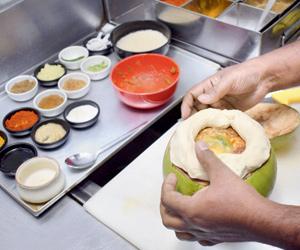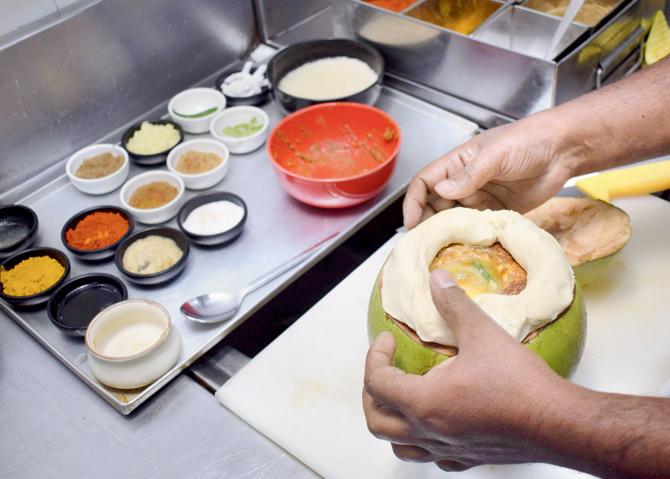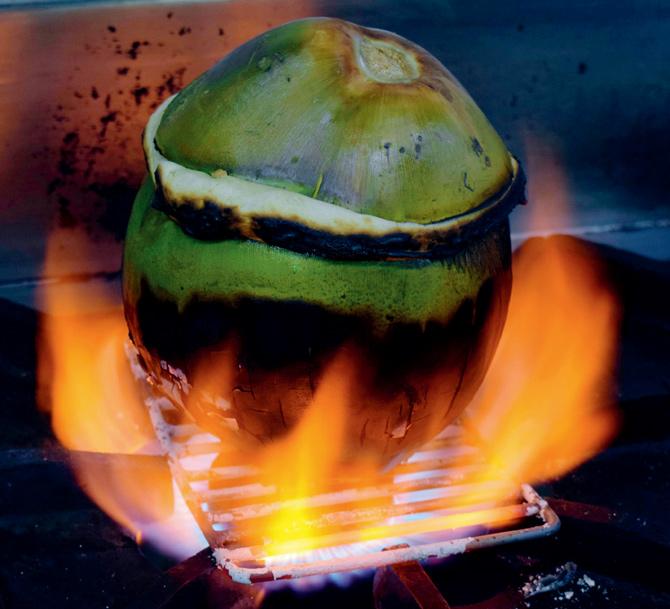Chef Sagar Chakraborty takes us through the technique of cooking inside a tender coconut

It was last year that Chef Sagar Chakraborty of Bandra's Craft Bar first came across the technique of cooking inside a tender coconut while researching Indian cuisine.
ADVERTISEMENT

Before cooking the rice, seal the coconut with dough
"We have a section called Roadies on the menu dedicated to regional dishes. So I'm always on the lookout for interesting indigenous cooking methods," he says. Although not popular in Maharashtra, the technique is common in West Bengal, Assam and Kerala where it's called dub chingri. "Traditionally, prawns are cooked in tender coconut water inside the coconut. It's a tribal-styled method," he adds.

Inspired, Chakraborty decided to give it his own spin with the nariyal paani biryani. Here, the rice and meat is placed inside the coconut along with the coconut water, sealed with dough and cooked for roughly 30 minutes.

Sagar Chakraborty
"We follow the Nizam style of cooking where the rice is cooked with nutmeg and saffron. But, of course, you can add spices of your choice," he says. For Chakraborty, the initial challenge was to nail the texture of the rice, which took him over 18 trials. During the trials, he also realised the technique could easily be pulled off at home.

The technique is suited to meat and seafood preparations
He, however, advises on soaking the rice in the coconut water for about 15 minutes before putting it on the gas stove. "Also, ensure that the coconut is tender. Pick up a coconut with minimum 200 ml water content because the inside space plays an important role in portioning," he says. While the method is suited to meat and seafood preparations, the chef has experimented with marinated baby potatoes and jackfruits as well. "The coconut water lends the dish a certain richness and an aromatic flavour," he says.
 Subscribe today by clicking the link and stay updated with the latest news!" Click here!
Subscribe today by clicking the link and stay updated with the latest news!" Click here!







